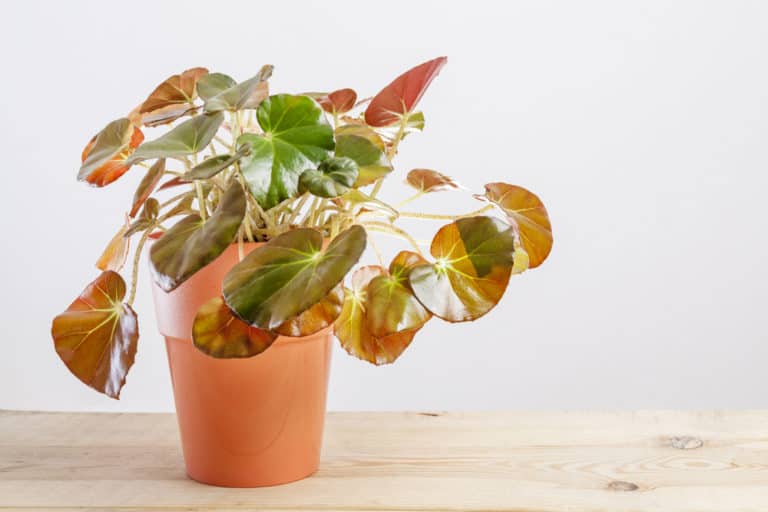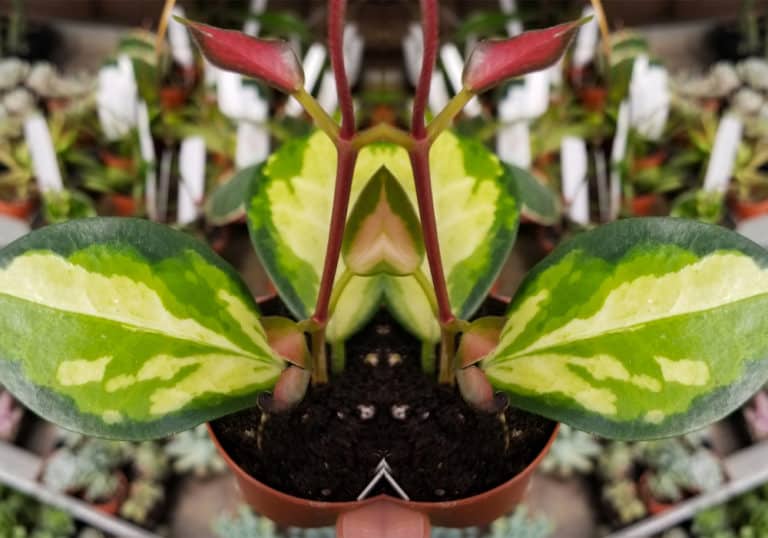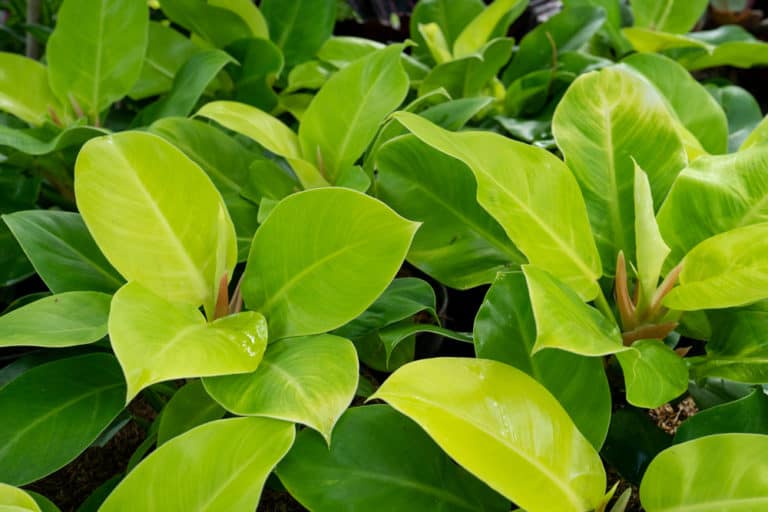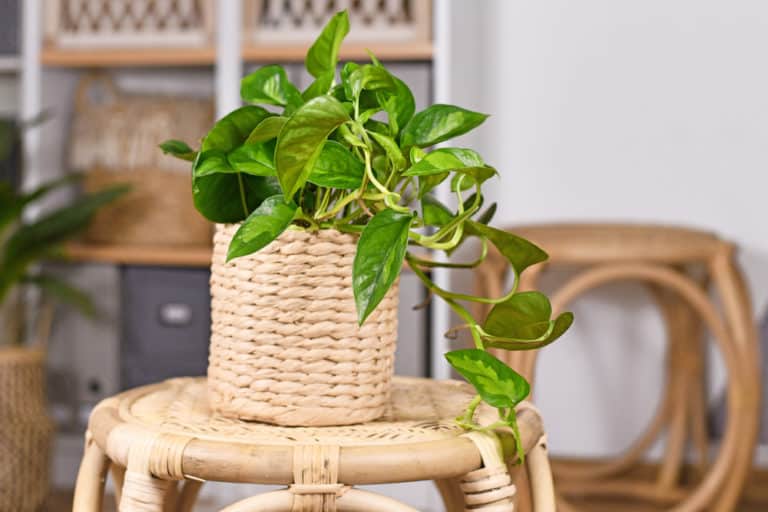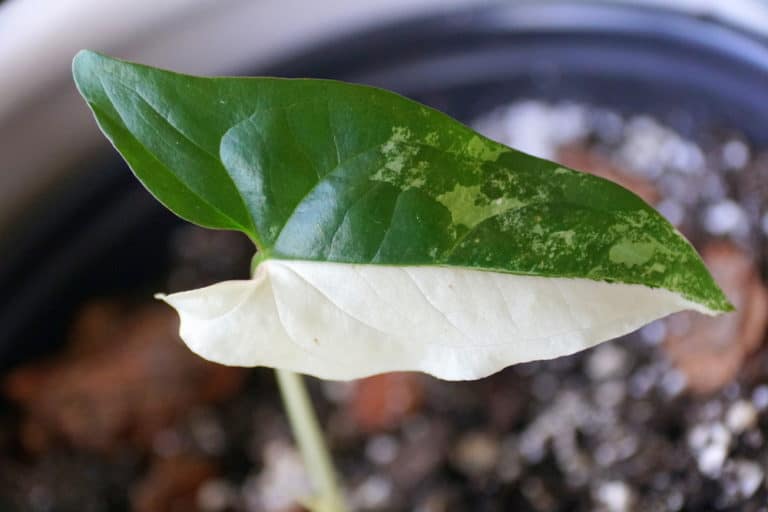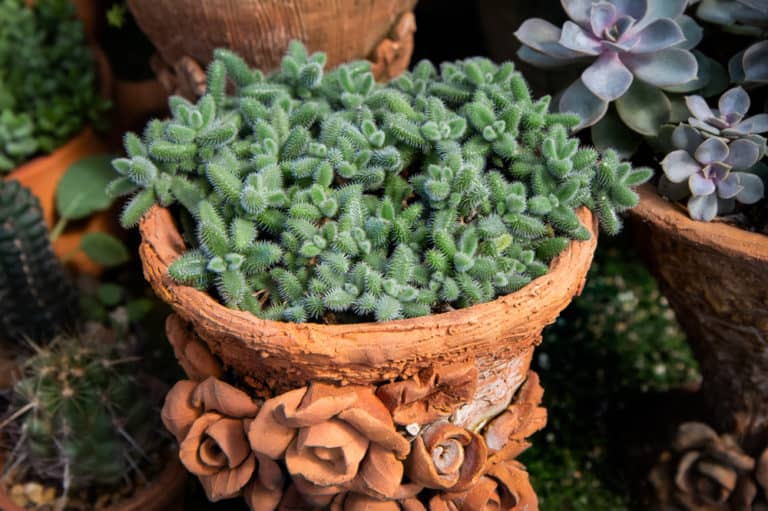Aptenia Cordifolia ‘Baby Sun Rose’ Care Guide (2024)

The best thing about Aptenia cordifolia is that it is fitted for establishing xeriscapes. This type of landscape involves the use of water-efficient plants such as cacti and succulents. This species is more likely to flourish in dry regions. It’s a unique and beautiful groundcover to graze your yard.
Plant Profile
Common Name: Baby sun rose, Red aptenia, Heartleaf ice plant
Scientific Name: Aptenia cordifolia
Type: Succulent
Origin: South Africa
Habitat: shady places, often under trees
Size: 250 mm high and 600 mm long
Toxicity: Non-toxic to cats and dogs
Colors: Green
Blooms: Purple to red which appears on Spring and Summer (August to April)
Plant Care
Light: Full sun to semi-shade
Watering: Low; Soak and dry
Temperature: 50° to 85°F (10° to 29°C)
USDA Zone: 9 to 11
Air humidity: Moderate to high
Soil pH: Slightly acidic to Alkaline
Fertilizing: Use a regular liquid or granular fertilizer two to three times (growing season)
Propagation: Seeds, cuttings
Re-Potting: Every two years
Pruning: Trim early in the springtime
What’s Unique About Aptenia cordifolia?
As succulent in nature, the Aptenia cordifolia plant has the ability to utilize water in an efficient manner. They can withstand drought for a longer period. This is possible because they close their pores during the day to retain moisture. And they only open them during the night when it’s colder.
Aside from being a water-saver, this cordifolia plant remains evergreen. It means that it will parade its lush foliage throughout all seasons. This succulent is winter hardy in some growth zones. It’s another gem coming from South Africa thriving in shady places, often under tree canopies. The plant grows both outdoors and indoors.
Appearance
This species is also commonly known as baby sun rose plant. Its name describes its whole appearance as the plant is small and low growing. The word “sun” pertains to its sun-loving characteristic. Aside from the green foliage, it also produces tiny flowers that do not actually look like roses.
Foliage
In Latin, the term cordi means heart while the term folium means leaf. Thus, the term cordifolia means heartleaf which says a lot about the Aptenia cordifolia shape. The leaves resemble that of a heart and it has a shiny appearance, especially when sun-kissed. It also has that fleshy touch, which is a common thing for succulents.
The color is normally green but there also exists variegated baby sun rose. Each leaf could have an average size of 60 x 25 mm long. Since the plant has a creeping habit, the foliage looks dense and compact. Such a perfect groundcover!
Flowering
One thing that makes the Aptenia cordifolia appearance even more attractive is the presence of its flowers. Although it’s called baby sun rose, the flower has no resemblance to roses. Rather, it’s pretty much like tiny daisies. It appears in colors of purple to red. They bloom on top of each stem making them distinct and noticeable.
The Aptenia cordifolia blooming season starts from August to April. Lucky for you because you get the chance to enjoy these flowers from Spring to Summer seasons. Flowering is even more profuse when the plant receives enough bright light. They even open during the brightest times of the day.
Size and Growth
The tiny size of Aptenia cordifolia makes this plant easier to manage. It grows very close to the ground. In fact, it’s height could only reach a maximum height of 250 mm (9 inches). However, the plant spreads widely, reaching about 600 mm (27 inches) long.
Take note that the Aptenia cordifolia growth rate is fast. So, don’t get surprised if it easily forms a mat over your bare landscape. They can easily creep, forming a thick and lush foliage. In pots, however, their growth is more regulated unless you place it in a bigger container. If you’re establishing a landscape, this species is a perfect starter.
Fragrance
Unfortunately, Aptenia cordifolia succulent does not produce any fragrance. But that’s totally fine. One cannot have it all, right? Don’t expect the leaves or the flowers to produce a delightful smell. It won’t give you any as the plant is odorless.
Although Aptenia cordifolia fragrance isn’t present, the bright flowers are still very capable of attracting pollinators such as bees and butterflies. We know that this is very important to maintain balance in our environment.
To make a lovely combination, you can just pair your baby sun rose with another succulent species that is known for emitting a fragrance smell.
Toxicity
When it comes to Aptenia cordifolia toxicity, there’s nothing for us to worry about. This species is definitely non-toxic. It is known to be a friendly plant both outdoors and indoors. So, there’s no need to be overly cautious and paranoid. This species won’t hurt you, your kids or your pets.
For Humans
The foliage of Aptenia cordifolia has more benefits than just being an ornamental display. Many sources have cited that this plant is, in fact, edible. Some gardeners use them on their salad dishes. There were even reports that some folks use this for a medicinal purpose. If you’re an advocate of natural healing, you should definitely add this to your garden.
However, please be extra cautious when eating them raw. First, you have to make sure that your Aptenia cordifolia plants aren’t sprayed with any chemicals. Wash them off with running water or even a lukewarm one. Better safe than sorry.
For Pets
The baby sun rose is equally safe for pets as they are in humans. Likewise, it can also be eaten by your furbabies. No worries because they will certainly live after consuming any part of the plant. Nevertheless, we don’t want them to do so for practical reasons.
If your pets learn to eat this plant, then you’re doomed. You might end up losing your heartleaf ice plant (another Aptenia cordifolia common name) completely. To avoid this problem, just keep your pets away from them. Make separate rooms for plants and pets to save yourself from headaches in the future.
Suggested Uses
Aptenia cordifolia ground cover is the most popular use of this plant species. It will do best in outdoor landscapes, under tree canopies, along patios and even near driveways and sidewalks. The dense mat of foliage will make these spaces appear more refreshing and relaxing. Plus, it’s low maintenance.
Aside from that, growing Aptenia cordifolia indoors is also possible. You can plant them in small pots. You can have it hanged and let it trail downwards. Some gardeners even allow them to creep on old walls, concrete and fences. They have a high decorative value especially when the flowers start to bloom.
Aptenia cordifolia Care
Now that we’ve had enough introduction about this plant, we’ll give you the basic information about its growing conditions. Don’t worry because baby sun rose plant care is just an easy feat. You won’t have much trouble pleasing this plant. Plus, the reward it gives is going to be satisfying.
Light
As for Aptenia cordifolia light requirements, exposure to full sun is still the best option. That’s why this plant will flourish in an outside landscape. Bright light helps improve plant growth and development.
If the light is sufficient, you’ll observe the leaves to have a vibrant green look. Otherwise, it will exhibit a pale yellow color. That’s a sign that the plant needs more light. Potted plants need to be rotated from time to time. This will ensure that all parts receive equal exposure to sunlight.
Partial shade is also acceptable for baby sun roses. They will thrive even under tree canopies where there’s a little shade over.
Watering
Watering of Aptenia cordifolia requires very little effort. We’ve mentioned earlier that this plant uses water efficiently. That’s going to be advantageous for gardeners who want to save time. After watering, you can leave the plant for a week until the soil gets dry. When it feels dry, you may water again. Make sure that the soil is thoroughly soaked.
Don’t make the mistake of overwatering your succulent plant. If you’re unsure whether to water or not, we suggest that you lean on the dry side. An indication that the plant needs rehydration is when the leaves are turning flat.
Temperature
The optimal Aptenia cordifolia temperature ranges from 50° to 85°F (10° to 29°C). It thrives in warm to hot temperatures and can handle high heat and sun exposure.
For short periods of time, it can tolerate temperatures as low as 20°F (-6°C) and as high as 100°F (38°C). But prolonged exposure to extreme heat can cause stress to the plant.
It’s best to keep your plant away from locations where there’s extreme heat coming. This includes air conditioners, heaters, and open windows. If you’re anticipating an increase or decrease in temperature, make sure that your plant is protected.
Locations under USDA Growth Zones 9 to 11 are best suited for this plant.
Air Humidity
The requirement for Aptenia cordifolia humidity is high. That’s no surprise since the plant naturally thrives in forests, under canopies of trees. We know that those are very humid places.
Outside, high humidity isn’t that hard to achieve. More so, if the plant is grouped with other species. However, that’s not the case indoors. So, make sure that you have enough humidity inside your home. A little misting from time to time would help. But do it only in the morning. And if you have a humidifier, you may have to turn that on from time to time. Do this when humidity gets low.
Soil
Sandy and loamy mixes will make a good Aptenia cordifolia soil. You may add other amendments to improve drainage. Buying ready to use succulent and cacti mixes is just fine. But, you can definitely make your own. The important thing is that it should be a well-draining medium.
Aptenia cordifolia plants will thrive in all types of soil pH whether alkaline, neutral, or acidic. So, that should not be a problem. Don’t forget to sterilize the soil mix. Soil-borne pathogens usually live in soils. They could be a problem in the future as they induce diseases to your lovely plants.
Fertilizing
Part of Aptenia cordifolia care is the provision of essential nutrients. Although this succulent isn’t a heavy feeder, it will appreciate a regular dose of fertilizer especially during the growing season. You can use a regular liquid or granular fertilizer two to three times. Dilute it to water to lower its concentration.
Fertilizer also aids in Aptenia cordifolia flowering. Be careful not to over fertilize your succulent. Excess fertilizer can cause trouble such as the development of brown tips on leaves. We don’t want this to happen as this can easily kill the plant. Do not apply fertilizer during winter.
Propagation
You can use Aptenia cordifolia seeds for propagation. Try to collect seeds from the tiny fruit that you’ll see on your plant. They’ll be visible once the flowers are spent. Just wait for them to reach maturity. Only mature seeds are capable of germination.
Propagation of Aptenia cordifolia can also be done using stem cuttings. This method is recommended. It’s a faster and easier method to multiply your succulents. All you need is cut healthy stems and plant them individually. Once they develop their own roots, they’re good to go. You can even sell your young plants once they’re established.
Re-Potting
Re-potting Aptenia cordifolia doesn’t have to be that frequent. Even if the plant is fast-growing, it prefers to be a little pot bound. So, there’s no problem in using small pots. Just don’t forget to drill enough holes for drainage.
You can re-pot the plant every two years or when deemed necessary. If the plant is suffering from root rot, you’ll have to re-pot as well. Use a well-draining potting mix as a fresh medium. Be careful not to damage the root system as you transfer the plant to another container. You may trim the roots a little to remove the dead portions.
Pruning
If you’re pruning Aptenia cordifolia, do it early in the springtime. This season is where your plant is actively growing. This will help the plant recover and re-grow fast after pruning. Use a sterilized pruning shear to remove the aged stems and leaves. Also include the portions that are diseased.
Pruning helps keep the plant in shape. It will help thin out the thick foliage of your Aptenia cordifolia making it easier to manage. However, advise that you exercise caution in pruning. Some beginners commit the mistake of over pruning their plants. Such practice could lead to the plant’s demise.
Aptenia cordifolia Common Problems
Now, it’s time to talk about the common Aptenia cordifolia problems. Although this plant isn’t a fussy one, the appearance of these problems could be inevitable. So, it is better to be prepared now for such possibilities. We will discuss each problem in a more detailed way. Here they are:
Pests
The common Aptenia cordifolia pests include mealybugs, snails and slugs. Mealybugs are small creatures that are hard to spot unless they’re in a huge population. They have that white, powdery wax over their bodies. The way to eliminate them is by spraying off with insecticidal soap or diluted dishwashing liquid.
Snails and slugs, on the other hand, are heavy feeders of leaves. They can easily make your plant bald overnight. One option to prevent their attack is surrounding the plant with a copper slug tape. You may also sprinkle coffee grounds, wood ashes, sand, crushed eggshells, and diatomaceous earth (DE) around the plant.
Diseases
There are only a few Aptenia cordifolia diseases that you’ll encounter. The most prevalent is root rot. This disease is caused by soil-borne pathogens that have taken residence in the medium. They become most active when the conditions are wet and humid. So, overwatering results in such a problem.
Another disease is chlorosis or the yellowing of the leaves. This could be due to nutrient deficiency, lack of water, lack of sunlight or even transplant shock. The specific remedy depends on what causes the yellowing. So, you have to properly diagnose the reason behind. This will help devise appropriate solutions.
Growing Problems
By now, you should know that it isn’t hard to grow Aptenia cordifolia at home. The only serious trouble to face is if you manage to overwater the plant. And we’ve warned you enough about that already. You just have to take that seriously.
As long as you’re dedicated to following the tips we provided, your plant will live happily and healthily. Just remember that your plant deserves the best environment it could live in. If you understand that, then, you’re most likely to be a good plant parent. So, now is the best time to shop for a new succulent.
FAQ
How do you care for a baby sun rose?
Proper care for Aptenia cordifolia includes providing full sun, little water, high humidity and ideal temperature. Don’t forget to plant it in well-draining soil, too.
Is Aptenia cordifolia an indoor plant?
Yes, it can be an indoor plant. While it’s a popular ground cover for outdoor landscape, it can also be grown in pots inside our homes.
Is Aptenia cordifolia invasive?
Since the plant easily spreads, it does have invasive tendencies. You can easily mistake this plant as a grass if planted outdoors. That’s why regular pruning is needed.
Is baby sun rose poisonous?
Luckily, this plant is not poisonous. In fact, there were reports that this food is being eaten in some parts of Brazil. So yeah, it’s edible.
How do you plant Aptenia cordifolia?
You can either use seeds or stem cuttings as a starter. Plant them in a well-draining potting mix until they grow as an individual plant.
Do ice plants bloom all summer?
Yes, it does. Ice plants are generous bloomers. They produce flowers for the entire spring and summer seasons. So, you have plenty of time to enjoy them.
Is Aptenia cordifolia edible?
Yes. Some individuals include the leaves of Aptenia cordifolia in their diet. Particularly, it is used as an ingredient for fresh salad. Thanks to its medicinal property.
Is baby sun rose a succulent?
Baby sun rose is a succulent. It has those fleshy leaves which is a common characteristic for succulents. It is also drought tolerant and won’t need much water.
Can baby sun rose survive winter?
The plant is frost tolerant at some point. However, freezing temperatures during winter will cause it to die back. If it’s potted, bring it indoors during the cold season.

